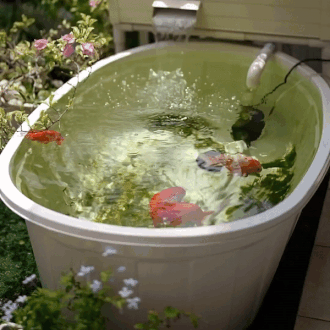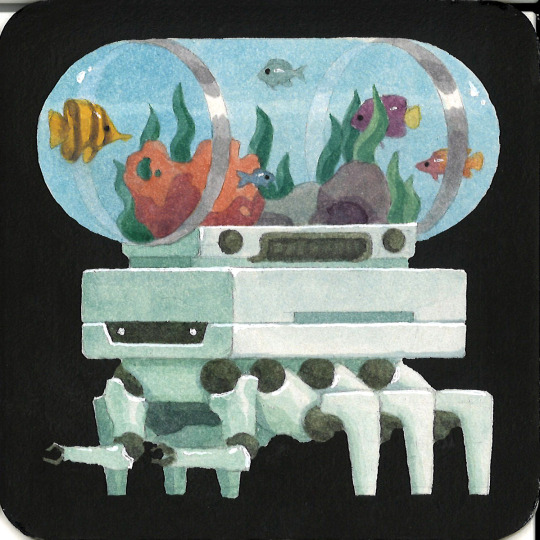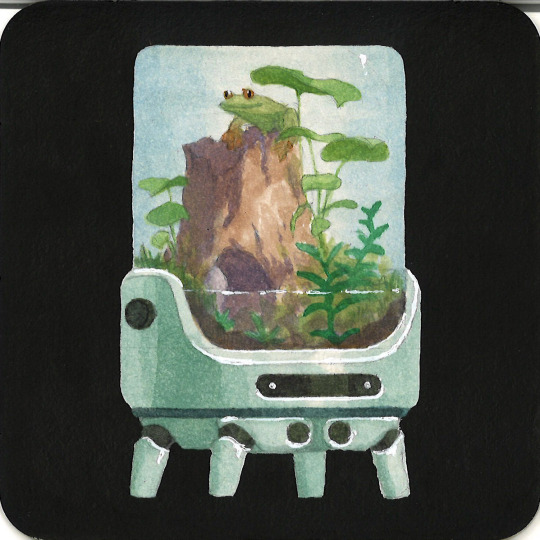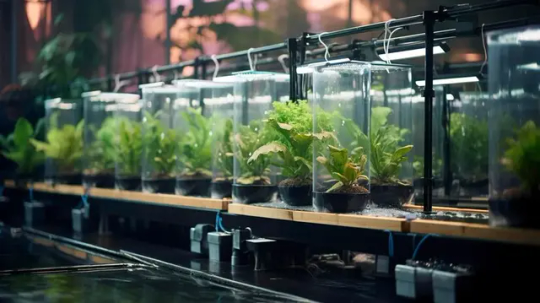#Aquaponics
Explore tagged Tumblr posts
Text




berawaldariember on ig
#aquaponics#goldfish#fish#stim#sfw#green#orange#white#plants#water#flowers#sea creatures#pouring#bubbles#trypophobia#ishy gifs#postish#clear
6K notes
·
View notes
Text




A collection of hydroponics and solar powered machines I did over the years🌻
There is something about machines that work together with nature, instead against it, that keeps facinating me. I hope to explore this more in the future!
#dinchenix#solarpunk aesthetic week#pixel#pixel art#pixelart#artists on tumblr#art#solarpunk#my art#hydroponics#aquaponics#solar panels
597 notes
·
View notes
Text

flowering tomato vine cutting! (@divaladiva was trimming)
20 notes
·
View notes
Text
It’s pretty awesome how a lot of the plants im growing with aquaponics have been thriving and putting off tons of new growth even though it’s not really the recommended way to grow the plants. I feel like a mad scientist who is just stumbling into great results
Alt text has the ability plant names








#aquablr#planted aquarium#aquariums#aquaponics#aquaponic#plants#plantedtank#planted tank#plantblr#plantlife
12 notes
·
View notes
Text

It's my 13 year anniversary on Tumblr 🥳
Well…I’m enjoying the ride.
#13 year tumblrversary#tumblr milestone#australia#hydroponics#food#aquaponics#vegetable garden#diy#backyard harvest#perth eze grow hydroponic and aquaponics#homegrown#youtube
13 notes
·
View notes
Text
This video demonstrates a completely low-maintenance aquaponics system featuring goldfish and guppies in a self-sustaining, eco-friendly setup.
Aquaponics is a symbiotic system that combines aquaculture (raising fish) with hydroponics (growing plants in water).
Designed for those who want a hands-off approach, this system requires no water changes, no maintenance, and only feeding the fish.
A walkthrough of the design:
Fish Tank: A large, stable tank housing goldfish and guppies, with an established natural ecosystem.
-Grow Bed: Overflowing with healthy leafy greens, herbs, and small vegetables.
-Water Flow: Automated circulation keeps the system oxygenated and nutrient-rich.
-Closed-loop system, where the water continuously recycles, eliminating the need for manual water changes.
Plants grow by absorbing fish waste nutrients, with lush greenery thriving in the system.
Footage of successful growth with no added fertilizers or chemicals.
This video is ideal for anyone interested in low-maintenance gardening and aquaponics, demonstrating how simplicity can lead to sustainability!
#sustainability#environment#wastefree#trash#plasticfree#viral#fy#fyp#wasteremoval#sustainable#aquaponics#aquarium#animals#cute animals
11 notes
·
View notes
Text
#organic agriculture#aquaponics#aquaculture#symbiotic relationship#love#permaculture#education#entrepreneur#small business#join us#support communities#youth of america#farm
22 notes
·
View notes
Text
youtube
There are so many barriers in place when it comes to growing food in cities, but education and lack of access to space are the hardest to overcome. Yemi Amu has dedicated her life as a farmer to solving this problem, by starting the only Aquaponics farm in NYC. Oko Farms in Brooklyn is both a working farm which provides fresh food to surrounding neighborhoods, while also actively engaging the public in education on how to grow food for yourself in urban environments.
#PBS Terra#solarpunk#aquaponics#USA#new york#new york city#brooklyn#Yemi Amu#food security#farmer#black farmers#farming#aquaponics farm#Oko Farms#urban gardening#urban farming#Youtube
10 notes
·
View notes
Text




This Sunday!! Salut 8 group show opens to the public over at @nucleusportland @drinkanddrawsociety 🐸🪲🪼🐠 Always a pleasure seeing so many cool artists' works together in one place. Check it out starting online and if you're in the Portland area!
#watercolor#ink#solar punk#aquarium#aquaponics#coaster show#coaster art#concept art#mecha#mech#terrarium#artists on instagram#artists on tumblr#painting#women in animation#art#illustration#jellyfish#fish#frog#vivarium#paludarium#gallery#gallery nucleus#beetles#fish tank#traditional painting#paint#robot
55 notes
·
View notes
Text
Global Aquaponics Market: Growth, Trends, and Forecast (2023-2030)

Aquaponics, a sustainable farming method that combines aquaculture and hydroponics, is poised for remarkable growth. With a projected market value of USD 3.9 billion by 2030, growing at a CAGR of 14.15%, it offers an efficient way to produce both fish and plants. This eco-friendly solution uses minimal water and no soil, making it ideal for urban settings and regions with limited resources. With innovations in AI and IoT technology, aquaponics systems are becoming more accessible and efficient, paving the way for a greener future in agriculture.
Learn more.
For Downloade Sample Report.
2 notes
·
View notes
Text
youtube
#ejglamos#garden#crafts#etsystore#gardening#outdoorliving#planting#aesthetic#plants#astronomy#halloween#botanical#sawdust#woodworking#etsysmallbusiness#etsyfinds#soil making#shopping#onlineshopping#cyber monday#madeinusa#composting#black friday#ecomerce#aquarium#aquaponics#crypto#crowdfunding#etsy shop#wood blocks
2 notes
·
View notes
Text
Every once in a while i get the manic urge to start an aquaponic system. It gets so bad that i plan the whole thing and do the calculations every time and everytime, i get SO close to actually buying fish for this. And I know that I cannot realistically maintain all that and have to stop and chant to myself "i dont need this i dont need this i dont need this—" but the farmer inside of me is saying "dont you wanna eat fresh veggies AND fresh fish right from your backyard without needing to interact with people in the market. Think about it. You have everything you need to start an aquaponics system. All that is left is the fish and we LOVE fish—" now im clutching on my metaphorical pearls like NOOOO SHUTUPSHUTUP I DONT NEED THIS I DO NOT NEED A BACKYARD AQUAPONICS SYSTEM— and it dies for a bit until the mania starts again
#i think we should ALL get the manic urge to start a sustainable food source system#its what we deserve#i have calculated the costs of everything in this possible project and almost contacted the fish seller#i had to physically stop myself#This mania has been going on for years now btw#Im so normal about aquaponics I swear#I also almost started a quackaponics system. like. i literally already got ducks for it but i had to stop myself#because where tf would i put TWO whole ass ducks in my small backyard???#anyways i recovered early enough that I sold the ducks to a local farm#random blue rambles#aquaponics
28 notes
·
View notes
Text






🪴 This liquid plant food and soil conditioner from ounce of hope aquaponics works wonders!!! We use it for our vegetable garden and indoor/outdoor plants. It's made of real fish poop that's full of nutrients to help plants grow and thrive! I love how it's an all purpose fertilizer that's like a multivitamin for plants! It feeds, restores good bacteria into the soil and improves the soil structure.
🪴 One of my favorite things about this liquid fertilizer is how unlike emulsions or manure it doesn't smell! This one bottle goes a long way and actually makes 16 gallons of highly concentrated plant fertilizer. To learn more and try it for your plants visit
ounceofhope.com/fish-poop
3 notes
·
View notes
Text
Rediscovering the Joy of Growing: My Journey Back to Gardening
Hello and welcome to my very first post on “Just Facilitating Life” I’m thrilled to embark on this journey with you as I dive into the fascinating world of growing plants, raising backyard chickens, and nurturing my family. Today, I want to share the story of how I reignited my passion for gardening at the age of 46.
Childhood Facination
My love for plants began when I was a child. I remember the thrill of planting a seed and eagerly watching it grow through each stage—germination, sprouting, flowering, and fruiting. Every step felt like a tiny miracle. I tinkered with growing garden vegetables, fruits, and even experimented with cannabis, which taught me the technical aspects of cultivation.
The Pause and Rediscovery
Life, as it often does, took me on different paths. As the years went by, I drifted away from gardening. But six months ago, a significant change occurred: I quit drinking. Seeking a constructive way to keep my busy mind occupied, I found myself drawn back to the garden. The sense of peace and purpose I once felt returned with a newfound intensity.
Why Gardening?
Gardening is more than just a hobby for me; it’s a passion that fulfills several aspects of my life:
1. Mental Focus: It keeps my mind busy and engaged.
2. Connection with Nature: It allows me to connect deeply with the natural world.
3. Family Bonding: It provides a wonderful way to bond with my two daughters.
4. Personal Growth: It’s a metaphor for my own journey of growth and transformation.
Diving into Different Methods
I'm excited to explore and share various methods of plant cultivation:
- Hydroponics: Growing plants in water, which fascinates me with its efficiency and innovation.
- Organic Gardening: Embracing natural methods to nurture plants and soil.
- Aquaponics: Combining fish farming with plant cultivation for a sustainable ecosystem.
Growing More Than Plants
Beyond plants, I’m also passionate about raising backyard chickens. They not only provide fresh eggs but also teach my daughters about responsibility and the cycle of life.
My Goals with Just Facilitating Life
Through this blog, I hope to:
- Share Knowledge: Provide tips and insights on various growing techniques.
- Inspire Others: Encourage you to find your own passion for gardening or any other fulfilling activity.
- Document My Journey: Reflect on my progress and the lessons learned along the way.
Gardening has been a transformative experience, helping me grow in many ways. I’m excited to share this journey with you and hope it inspires you to cultivate your own patch of happiness, whether it’s in a garden, with your family, or within yourself.
Thank you for joining me on this adventure. Stay tuned for more posts about the wonders of growing life!
- Justin
2 notes
·
View notes
Text
youtube
How This Aquaponics Farmer Is Reinventing Urban Agriculture (PBS Terra, 6/29/23)
#yemi amu#aquaponics#video#youtube#oko farms#farms#black farms#brooklyn#new york city#black farmers#black businesses#pbs#agriculture#women of the earth#Youtube
6 notes
·
View notes
Text
youtube
Hydroponic vegetable garden chores
#australia#hydroponics#food#aquaponics#vegetable garden#diy#backyard harvest#perth eze grow hydroponic and aquaponics#homegrown#youtube
7 notes
·
View notes